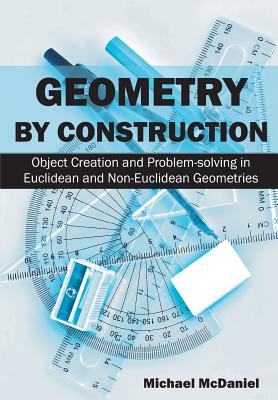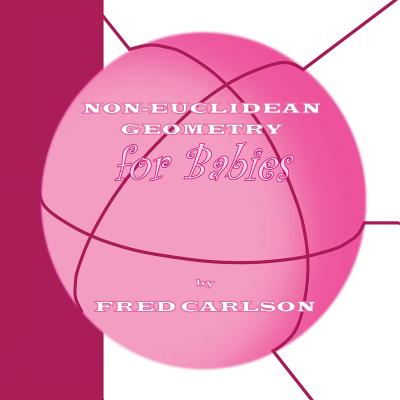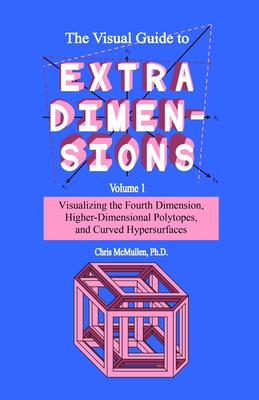


Discover the Hidden Mathematics of Modern Geometry
Fractals, the never-ending geometric-mathematical patterns existing throughout nature, are revealed in the shapes of continents, galaxies, snowflakes, and grains of sand. In this fascinating and seminal volume, renowned pioneering-mathematician Benoit B. Mandelbrot explains his work on fractal geometry, mathematically translating the description of these complex shapes of nature.
Until Mandelbrot developed the concept of fractal geometry in the 1960s and 70s, most mathematicians believed these irregular shapes were too fragmented and amorphous to be described mathematically. Mandelbrot's revolutionary concept brought order to a variety of seemingly unsolvable problems in physics, biology, and financial markets.
Broad in application, this groundbreaking work will inform not just mathematicians, but anyone that appreciates the natural elegance of patterns made manifest. Featuring illustrations of mathematically defined shapes, Mandelbrot describes how geometric patterns relate to every aspect of the physical world around us.

The Essential Guide that Introduced Fractals to the World
Explore the wondrously complex repeating shapes of the natural world in The Fractal Geometry of Nature. Written in a style that is accessible to a wide audience, computer scientist, professor, mathematician, economist, and visionary Benoit B Mandelbrot's fascinating work has inspired popular interest in the geometry inherent in the natural world.
Unlike the squares, circles, spheres, and cones of fundamental geometry, nature has rough edges and no straight lines or perfect curves. Mandelbrot observed that, even with this roughness, there still exists a kind of symmetry, which he dedicated his work to document and study. This became the basis for his development of a new kind of geometry; indeed, he coined the term fractal.
Mandelbrot spent 35 years with IBM, which allowed him access to the level of computing power that would enable him to manipulate computer-generated images and develop his theory of a geometry found throughout our natural environment. He was among the first to use computer graphics to illustrate and test these kinds of concepts, demonstrating that natural phenomena which appear to be rough or chaotic actually have a certain degree of order and predictability.
This definitive overview builds on Mandelbrot's 1977 work, Fractals: Form, Chance and Dimension (also published by Echo Point Books), revealing an in-depth look at this still-emerging field. Richly illustrated and presented in an engaging manner which embraces geometric and visual dimensions interspersed with aspects of theory, this book will inspire curiosity and wonder in artists, mathematicians and naturalists alike.
This book is also available from Echo Point Books in paperback (ISBN 1648370411).
Be sure to check out Benoit Mandelbrot's other definitive work, also availabe from Echo Point books: Fractals: Form, Chance and Dimension (use the web address https: //www.amazon.com/dp/1635619025/).



Discover the Hidden Mathematics of Modern Geometry
Fractals, the never-ending geometric-mathematical patterns existing throughout nature, are revealed in the shapes of continents, galaxies, snowflakes, and grains of sand. In this fascinating and seminal volume, renowned pioneering-mathematician Benoit B. Mandelbrot explains his work on fractal geometry, mathematically translating the description of these complex shapes of nature.
Until Mandelbrot developed the concept of fractal geometry in the 1960s and 70s, most mathematicians believed these irregular shapes were too fragmented and amorphous to be described mathematically. Mandelbrot's revolutionary concept brought order to a variety of seemingly unsolvable problems in physics, biology, and financial markets.
Broad in application, this groundbreaking work will inform not just mathematicians, but anyone that appreciates the natural elegance of patterns made manifest. Featuring illustrations of mathematically defined shapes, Mandelbrot describes how geometric patterns relate to every aspect of the physical world around us.



Mathematician Fred Carlson believes that it's never too early to introduce children, and even babies, to the basic concepts of advanced mathematics. He is sure that after reading this book, the first in his Mathematics for Babies series, you will agree with him
This is one of two versions of this title. The interior of both books is identical, but the cover design on this one is done in Pretty Pink, perfect for babies who prefer the color pink instead of blue.
The Baby Blue edition can be found here: http: //www.amazon.com/dp/1481050044

College geometry students, professors interested in undergraduate research and secondary geometry teachers will find three rich environments in this textbook. The first chapter contains many of the standards of Euclidean college geometry. The second and third chapters introduce non-Euclidean models where some Euclidean rules hold and others do not. With emphases on constructions and proofs, the reader is encouraged to create the objects under investigation and verify the results with reasoning. Since both models of bent spaces exist in Euclidean geometry, the reader gains facility with Euclidean moves through the whole book, even while exploring non-Euclidean spaces. The book itself is meant to be unpacked, expanded and taken further, just like the problems it contains.
Geometry by Construction challenges its readers to participate in the creation of mathematics. The questions span the spectrum from easy to newly-published research and so are appropriate for a variety of students and teachers. From differentiation in a high school course through college classes and into summer research, any interested geometer will find compelling material.
Teachers and professors might especially appreciate the way constructions provide open-ended questions which resist internet searches for solutions. College students should find the five refereed results from undergraduates like themselves encouraging. The active reader joins the mathematical tradition of a laboratory being a notebook plus a compass and ruler (or a dynamic geometry program on a computer.) New ideas await exploration and here are examples

This is the definitive presentation of the history, development and philosophical significance of non-Euclidean geometry as well as of the rigorous foundations for it and for elementary Euclidean geometry, essentially according to Hilbert. Appropriate for liberal arts students, prospective high school teachers, math. majors, and even bright high school students. The first eight chapters are mostly accessible to any educated reader; the last two chapters and the two appendices contain more advanced material, such as the classification of motions, hyperbolic trigonometry, hyperbolic constructions, classification of Hilbert planes and an introduction to Riemannian geometry.




This introductory text explores and develops the basic notions of geometry on the hyperbolic plane. Topics covered include the upper half-space model of the hyperbolic plane, Möbius transformations, the general Möbius group and the subgroup preserving path length in the upper half-space model, arc-length and distance, the Poincar disc model, convex subsets of the hyperbolic plane, and the Gauss-Bonnet formula for the area of a hyperbolic polygon and its applications. Coverage provides readers with a firm grasp of the concepts and techniques of this beautiful area of mathematics.


Das Buch bietet einen neuen und sehr zugänglichen Einstieg in eine neue Geometrie, die vor gar nicht so langer Zeit entdeckt wurde. Diese Geometrie, die hyperbolisch genannt wird, spielte eine Schlüsselrolle in der Entwicklung der Mathematik. Vor ihrer Entdeckung waren sich die Mathematiker sicher, den uns umgebenden Raum zu studieren, wenn sie sich mit Geometrie beschäftigten. Danach war klar, dass es mehr als nur eine Geometrie gibt und die Mathematik nur Modelle studiert, mit denen die Realität mehr oder weniger gut beschrieben werden kann. Es ist nun die Rolle der Physik zu entscheiden, welches Modell am besten zur Beschreibung geeignet ist.
Das Neue an dem hier präsentierten Zugang ist der Einsatz eines CGS (Computer Geometrie System), mit dem viele Eigenschaften dieser Geometrie selbst entdeckt werden können. Das Buch bietet viele Aufgaben zur Eigenaktivität. Ausführliche Lösungen erlauben eine gute Kontrolle des Lernprozesses. Es ist in einfacher Sprache geschrieben mitdem Ziel, dass es selbst an einem Gymnasium zum Einsatz kommen kann, was der Autor bereits mehrfach erfolgreich praktiziert hat.Das Buch richtet sich an Studierende, Lehrer(innen) und Schüler(innen) an Gymnasien und an alle, die sich für die Mathematik interessieren.

Mathematician Fred Carlson believes that it's never too early to introduce children, and even babies, to the basic concepts of advanced mathematics. He is sure that after reading this book, the first in his Mathematics for Babies series, you will agree with him
This is one of two versions of this title. The interior of both books is identical, but the cover design on this one is done in Baby Blue, perfect for babies who prefer the color blue instead of pink.
The Pretty Pink version can be found here: http: //www.amazon.com/dp/1480203246


The aim of these lecture notes is to propose a systematic framework for geometry and analysis on metric spaces. The central notion is a partition (an iterated decomposition) of a compact metric space. Via a partition, a compact metric space is associated with an infinite graph whose boundary is the original space. Metrics and measures on the space are then studied from an integrated point of view as weights of the partition. In the course of the text:

Essential mathematical insights into one of the most important and challenging open problems in general relativity--the stability of black holes
One of the major outstanding questions about black holes is whether they remain stable when subject to small perturbations. An affirmative answer to this question would provide strong theoretical support for the physical reality of black holes. In this book, Sergiu Klainerman and Jérémie Szeftel take a first important step toward solving the fundamental black hole stability problem in general relativity by establishing the stability of nonrotating black holes--or Schwarzschild spacetimes--under so-called polarized perturbations. This restriction ensures that the final state of evolution is itself a Schwarzschild space. Building on the remarkable advances made in the past fifteen years in establishing quantitative linear stability, Klainerman and Szeftel introduce a series of new ideas to deal with the strongly nonlinear, covariant features of the Einstein equations. Most preeminent among them is the general covariant modulation (GCM) procedure that allows them to determine the center of mass frame and the mass of the final black hole state. Essential reading for mathematicians and physicists alike, this book introduces a rich theoretical framework relevant to situations such as the full setting of the Kerr stability conjecture.